
OCTG industry salutes Customs for catching trade crooks
The US OCTG Manufacturers Association is commending US Customs for intercepting another Thai company's attempt to illegally transship Chinese oil pipe to the US.

The US OCTG Manufacturers Association is commending US Customs for intercepting another Thai company's attempt to illegally transship Chinese oil pipe to the US.
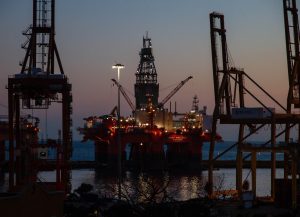
Oil and gas drilling activity was mixed this week, according to Baker Hughes. US totals slipped for a sixth straight week, while Canada saw a slight bump in activity.

US Department of Commerce (Commerce) review found no South Korean oil country tubular goods (OCTG) exporters or producers sold products below market value

Oil and gas drilling activity eased in both the US and Canada this week, according to Baker Hughes. US rig counts remain near multi-year lows, and Canadian activity continues its seasonal slowdown.

US rig counts remain slightly above multi-year lows, while Canadian activity is tapering off following a seasonal peak.

Ten US importers are on the hook to pay two years’ worth of anti-dumping and countervailing duties that US Customs says they had tried to illegally evade.

US rig counts remain just above multi-year lows, while Canadian activity is within earshot of a seven-year high.

The latest oil and gas rig count in the US increased slightly from last week, while Canadian activity edged lower, according to Baker Hughes.

Locking out its union employees two days before Christmas, Welded Tube's behavior has been very "Grinch-like," according to the USW.

The number of oil and gas rigs operating in the US remained unchanged this week for the second consecutive week, while Canadian activity declined, according to the latest data released from Baker Hughes.
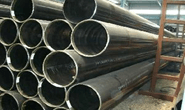
A newly adjusted anti-dumping duty on imports of oil country tubular goods (OCTG) from Argentina is too low, according to U.S. Steel. This past week, the Department of Commerce released the preliminary results of annual AD duty order reviews on OCTG from both Argentina and Mexico. It is reviewing imports during the one-year period that […]

The US drill rig count increased by seven this week, while the Canadian count dropped by 11, according to the latest data from Baker Hughes.

US rig activity has remained in multi-year low territory since June. Drilling in Canada has edged lower across the last few weeks but remains historically strong.
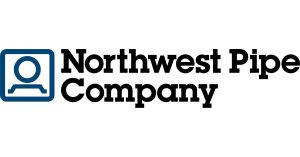
Northwest Pipe’s third-quarter earnings jumped over 76% on-year as the company expects a strong finish to 2024.

US drill rig activity saw a slight increase from last week but continues to hover near multi-year lows. In Canada, rig counts dipped last week but near one of the highest levels recorded in the past seven months.

In this Premium analysis we cover oil and natural gas prices, drilling rig activity, and crude oil stock levels in North America. Energy prices and rig counts are advance indicators of demand for oil country tubular goods (OCTG), line pipe, and other steel products.

US rig counts remain near multi-year lows, which is the territory they have been in for the last three months. Canadian counts have edged lower in the past two weeks, slipping from a six-month high earlier this month.

Oil and gas drilling activity in the US recovered the week ended Sept. 13, but remains near multi-year lows.

Oil and gas drilling activity in the US edged lower last week, while the Canadian rig count held steady at a six-month high.
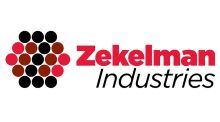
Zekelman Industries has bought 5% of available shares of Canada’s Algoma Steel.

Oil and gas drill rig activity in the US inched lower last week while holding steady in Canada, according to the latest report from oilfield services provider Baker Hughes.

US drill rig activity recovered last week after slipping the prior week, according to the latest data from Baker Hughes. But Canada’s counts edged down following a five-week run-up. Despite the decline, Canada’s rig count remains near a five-month high. US rigs In the week ended Aug. 9, the number of active drilling rigs in […]

US drill rig activity moved back up last week after drifting lower for four straight weeks. Meanwhile, Canadian counts slipped for the first time after a seven-week rally, according to the latest data from Baker Hughes.

US drill rig activity eased for the fourth consecutive week last week, while Canadian counts increased for the seventh week in a row, according to the latest data release from Baker Hughes.

US drill rig activity eased again last week, now down to levels not seen since late-2021, according to the latest data release from Baker Hughes. Canadian counts are moving in the opposite direction, inching higher for the sixth consecutive week to a three-month high.

US drill rig activity eased further last week, now down to a two-and-a-half-year low according to the latest update from Baker Hughes. In contrast, Canadian counts inched higher and are now at a three-month high.

S drill rig activity held steady last week, remaining near two-year lows according to the latest update from Baker Hughes

The US OCTG Manufacturers Association (USOMA) announced that the US Customs and Border Protection (CBP) agency made an initial affirmative determination of duty evasion practices.

US drill rig activity eased further last week, receding to levels last seen at the start of 2022 according to the latest update from Baker Hughes
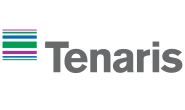
Tenaris is blaming unfairly traded OCTG imports flooding the US market for its decision to lay off approximately 170 employees.